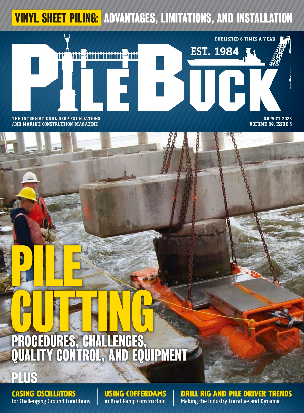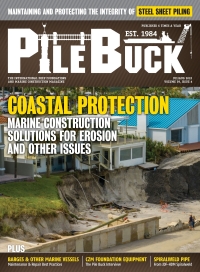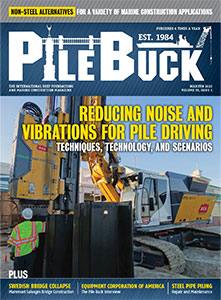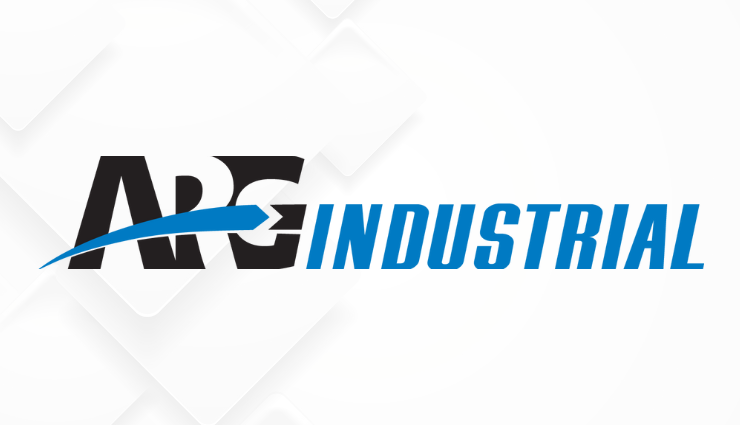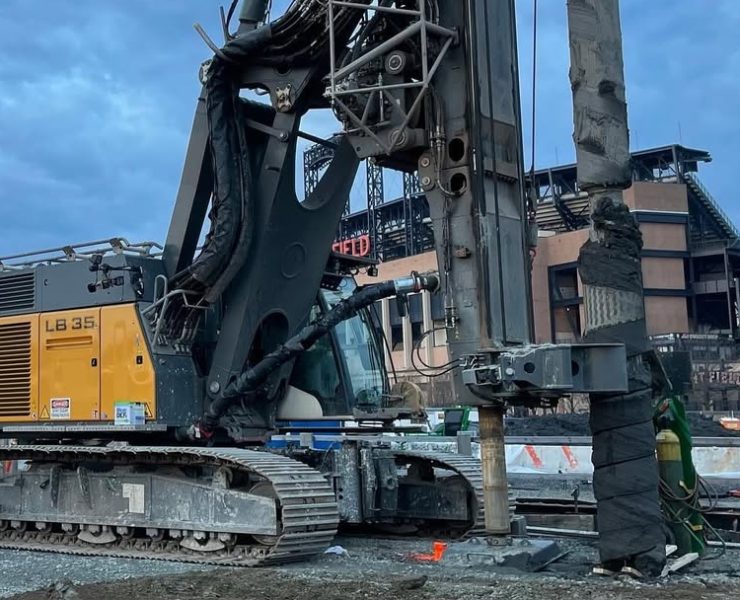Scottish Construction Company Builds It’s Own Piling Rig
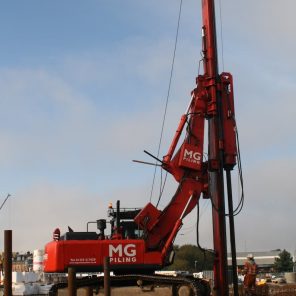
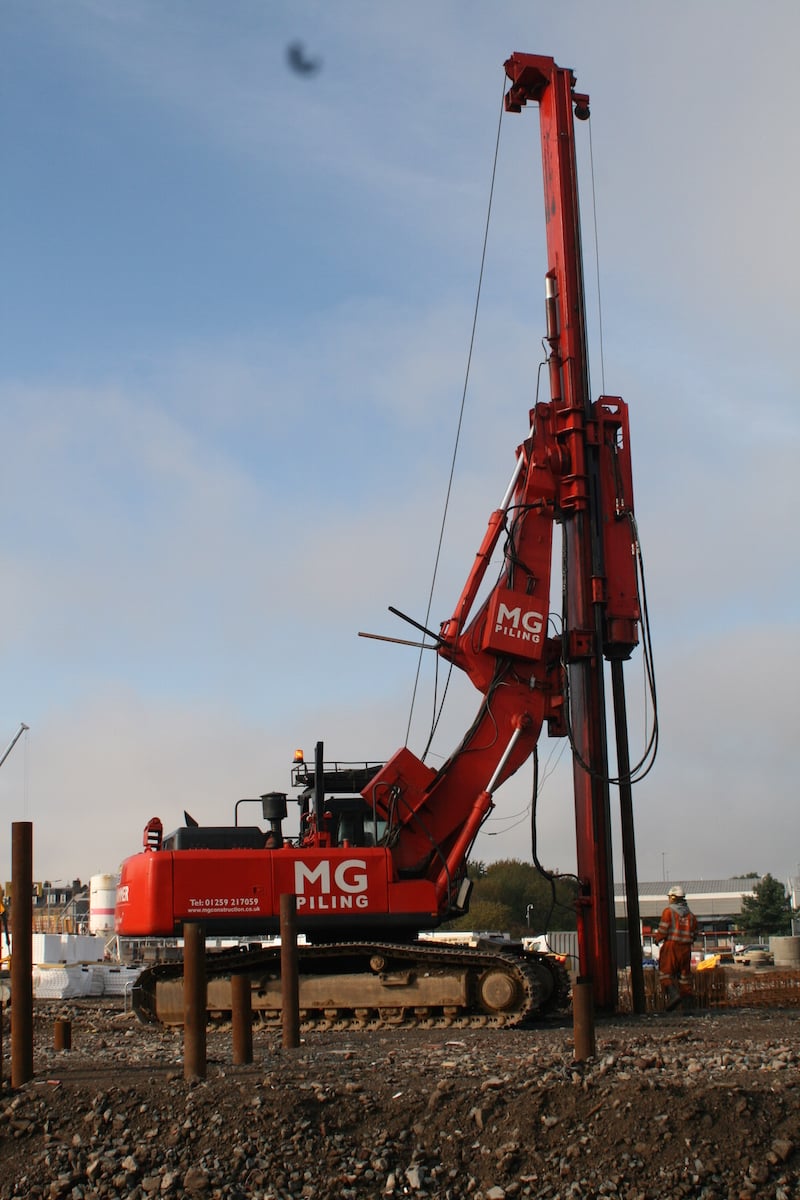 For obvious reasons there are few construction companies willing to undertake the building of their own piling rig but MG Construction defied all the odds by taking the imitative and began to assemble its own custom-built piling rig last year.
For obvious reasons there are few construction companies willing to undertake the building of their own piling rig but MG Construction defied all the odds by taking the imitative and began to assemble its own custom-built piling rig last year.
Based in Alloa, Scotland the company was established in 1991 by Craig Milloy and Tom Gibson. It was formed to provide the piling industry with a locally-based contractor specialising in design and build, geotechnical and structural projects as well as foundation piling, all carried out through its piling subsidiary MG Piling.
Over the years the company has gained an enviable reputation for its high standard of work and bringing contracts in on time. Some 25 people are employed in the management and operation of an equipment fleet comprising bored piling rigs, drilling rigs, drop hammer rigs and driven piling rigs. The company performs its own equipment maintenance and repairs but also outsources locally for any specialised fabrication work required.
The decision to build its own piling rig, incorporating a BSP impact piling hammer, in preference to buying one from a major manufacturer was based on tailoring a rig to suit the specific types of projects the company tends to undertake. Tom Gibson, managing director, says, “An in-house built rig provides us with greater flexibility than buying a similar sized model from a recognised manufacturer. Conventional rigs do not have the same degree of flexibility in setting-up and on-site manoeuvring while ease of transportation is also of particular importance for us.”
“Since commissioning the rig our capabilities have been significantly enhanced not only does it offer high production, but also the operator has total control of hammer stroke and blow rate and with the hammer’s high impact energy we can drive piles in harder ground.”
THE CARRIER
In selecting a suitable base carrier and power source the company elected to buy a used Hyundai R360LC-7 crawler excavator. This long undercarriage machine with an operating weight of just over 36t is powered by a six-cylinder Cummins QSC8.3c diesel engine developing 208.8kW gross which drives through a hydrostatic transmission.
A feature of the machine is the advanced computer aided power optimisation system which maintains engine and mutual pump power at optimum levels. Also included in the machine’s specification are auto deceleration and power boost, a system designed to monitor engine speed, coolant temperature, hydraulic oil temperature and reduce fuel consumption. Contained within the system are self-diagnostic capabilities which are displayed by error codes on the dashboard cluster.
The hydraulic system comprises two variable displacement piston pumps providing a maximum flow 2 x 288 litres/minute while travel is controlled by a two-speed axial piston motor.rs source the r specialised fabrication nworking rigs, drilling rigs, drop hammer
Especially important for strength in relation to piling is the X-Leg type centre frame integrally welded with reinforced box section track frames. This undercarriage includes lubricated roll, idlers, track adjusters with shock absorbing spring and sprockets and track chain with triple grouser shoes and is claimed to extend wear parts life.
Visibility from the roomy and soundproofed cab has been improved over earlier models while ventilation has been increased by the addition of the larger fresh air intake system and by providing additional air flow throughout the cab. Sliding front and side windows provide extra ventilation and the large sunroof offers upward visibility and additional ventilation.
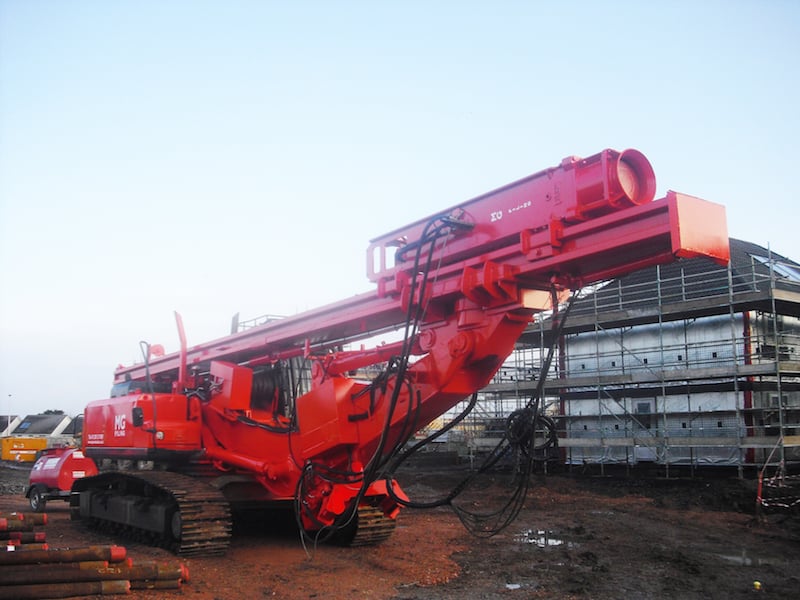 The machine is controlled by two control levers, which do not control the operation of the hammer, and a fully adjustable seat to provide maximum operator comfort.
The machine is controlled by two control levers, which do not control the operation of the hammer, and a fully adjustable seat to provide maximum operator comfort.
For servicing and maintenance the upperstructure side covers which swing open to allow easy access to components. The cooling and preheating system are provided to guarantee longer life for the engine and hydraulic components. The electric control box and air cleaner are centralised in the same compartment for easy service.
During the building process the machine was subject to major reconfiguration of its attachment geometry to accommodate the BSP hammer. The main consideration of the design was to ensure ease of erection of the mast and folding it down for transportation. The existing hydraulic circuit was extended to facilitate the requirements of the hammer with control from a bespoke console within the cab.
Interestingly, the excavator’s curved boom was removed inverted and then with some modifications, used as the leader’s main mounting point.
The design and fabrication work of the 14m long leader was all carried out by the company which allows the rig and hammer to drive 10m long, 300mm diameter piles but couplers can be added to extend the length beyond 10m.
“Some hydraulic, mechanical and electrical parts were salvaged from other machines and used in an effort to keep costs within budget as building with all new parts would have been cost prohibitive. Building the rig took approximately three months of intermittent work by our in-house plant department,” says Mr Gibson.
THE HAMMER
MG Construction looked at a number of piling hammers and decided that the DX impact piling hammer, developed by Ipswich-based BSP International Foundations, one of the world’s leading manufacturers of piling hammer and related equipment, was the best choice to meet the company’s technical and equipment requirements as well as its reputation for reliability and ease of service characteristics.
BSP developed the DX hammer to drive steel piles to support railway electrification staunchions and gantries but is equally at home on other projects requiring foundation piling. It was specifically designed as an attachment for mounting on road/rail or tracked excavators with an operating weight of around between 32t and 38t.
Three models are available, the DX20, DX25 and DX30, which offer dropweights of 1.5t, 2.0t and 2.5t. Maximum impact energy is 20kNm, 25kNm and 30kNm respectively while blow rate at rated energy is approximately 80 blows per minute.
The DX hammers can also be used to drive sheet piles, small bearing piles or tubular steel with ultimate load bearing up to 1800kN. A feature of these new hammers is the innovative BSP double-acting cylinder, whereby the ram is accelerated on its downward path to achieve higher impact energy.
This energy is developed from a short stroke leading to a higher blow rate and greater pile driving productivity. The relatively small amount of hydraulic power required to operate this equipment, make these hammers an economical option not only for driving piles for stanchions and gantries but also for pile walls, coffer dams and temporary earthworks.
Following the rig’s commissioning it has been working on a number of projects in Scotland, one of the most recent being the installation of 152 tubular steel piles, 179mm in diameter and 21m to 22m long, for the foundations of a housing association building in Glasgow, Scotland.









